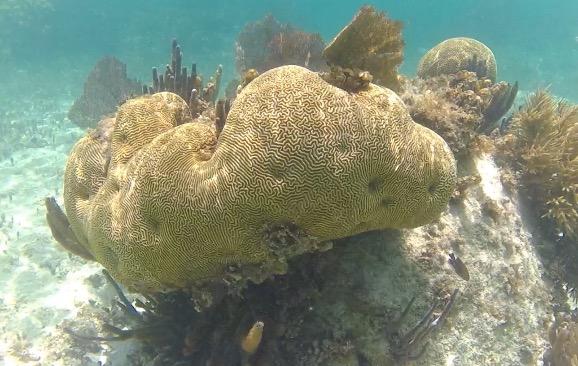
Many household products contain ingredients to protect them against sun damage. These UV filters are found in plastics, paints and textiles, as well as personal care products such as sunscreens and moisturizers. UV filters are entering the aquatic environment in rivers, lakes and oceans. Consider for a moment a beach goer swimming in the ocean or rain washing over plastic playground equipment and running into a stormwater drain ― either directly or indirectly, UV filters end up making their way to a waterway.
UV filters are chemicals that work by either physically blocking or absorbing UV rays. There are two main types of UV filters: inorganic forms, which contain metal particles, such as titanium dioxide (TiO2) or zinc oxide (ZnO) and physically block sunrays like little mirrors; and organic chemical UV filters, such as benzophenone-3 (BP-3 or oxybenzone) and octinoxate (EHMC), which chemically absorb UV rays.
In recent years, there has been a rapid increase in public, political and scientific interest in the effect UV filters have had on coral reefs; especially organic UV filters used in sun protection products. Coral reefs are important for biodiversity and provide great economic values, such as tourism and recreation. Significant decline in the diversity and abundance of coral in recent years has been attributed to climate change and longer-duration temperature events, which are exacerbated by human activities that cause coral bleaching, like overfishing and land run-off of nutrients and chemical pollutants. The impact of organic UV filters on corals has also been scrutinized and some regulatory bodies have even banned the sale of sunscreens containing certain organic UV filters.
A recent research summarizes the scientific literature assessing the impact of organic UV filters on coral ecosystems. The researchers reviewed nine laboratory coral exposure studies investigating the biological effects of organic UV filters and 12 studies that provided information on the concentration of 14 different organic UV filters in seawater near coral reefs. They concluded that while organic UV filters do occur in the environment, there is limited evidence to suggest their presence is causing significant harm to coral reefs. However, the scientists caution that based on the limited information and data currently available, it would be premature to conclude that organic UV filters do not adversely impact coral reefs. The scientists pointed to the wide variations in experimental designs used and issues of data reliability, which makes it difficult to draw conclusions. They also pointed to numerous critical data gaps in terms of reliable and relevant environmental exposure and toxicity data that need to be filled before conclusions can be drawn.
In their paper, Carys Mitchelmore and colleagues outline a number of recommendations for future studies to assess the environmental risk of organic UV filters to coral reef ecosystems. Mitchelmore adds, “In addition to more field and lab studies that take reef conditions and species into account, there is a need to develop a coral environment risk assessment framework. Investigating and prioritizing stressors on corals would allow regulators, policymakers and scientists to optimize conservation and management activities.”
Pic: A coral reef taken off the coast of Cancun, Mexico | Credit: Louise Carroll
Related Post
 01
01 Jul
7 Lifestyle Tips to Reduce Your Cancer Risk
How in all actuality do individuals bring down the possibilities getting malignant growth? There's a lot of exhortation. Yet, on occasion, guidance from one review conflicts with the exhortation from another. Disease avoidance data keeps on creating. In any case,.
Read More 27
27 Jun
Effective Allergy Treatments for Kids: A Comprehensive Guide
Is your youngster experiencing a runny nose, sniffling, and bothersome eyes? Assist them with feeling improved with these regular sensitivity cures you can attempt at home. Does your kid have a runny nose, sniffling, and irritated eyes? They may be managing.
Read More 20
20 Jun
Journal Prompts for Mental Health: 7 Ideas to Explore
Journaling has a heap of psychological well-being benefits, however you don't necessarily have any idea what to expound on to get the worth out of a journaling meeting. That is where journaling prompts for treatment come in. More profound diary prompts.
Read More 13
13 Jun
10 Natural Health and Nutrition Tips That Are Evidence-Based
If you have any desire to help your wellbeing and prosperity, there are a lot of regular and home solutions for browse, going from keeping away from singed meats and added sugars to rehearsing reflection. With regards to understanding what's sound,.
Read More